We’ve probably got a rival car designer with Leitrim roots to thank for the new-look Toyota Land Cruiser.
Car designer Gerry McGovern – whose parents are from Leitrim – turned the workhorse SUV market on its head when he styled the new Defender. In a market ruled by function, suddenly form showed its worth.
Retro styling has long been the way to go to give consumers comfort and reassurance in the face of tech upheaval and uncertainty.
High-flying car boss Luca De Meo built a career partly on a retro playbook, working on revivals of the Fiat 500 and several other models for different brands, most recently reviving the Renault 5.
RM Block
Now Toyota is getting in on this act, with a Land Cruiser that carries styling touches and square lines that hark back to its heritage.
When you are faced with a wave of new challengers, it makes sense to highlight your history; it’s not something these new rivals can replicate.
For this Toyota, the old-school lines – and the round headlights fitted to the First Edition versions – trigger useful reminders of the depth of history of Land Cruiser, stretching back to the Toyota BJ Series Jeep it inherited from US occupation after the second World War.
Fast-forward to the 1980s and this Toyota was the go-to vehicle in the most extreme conditions on the planet. By the turn of the century, when situations seemed apocryphal, a convoy of white Land Cruisers bearing UN or Médicins Sans Frontières regalia were usually on the move nearby.
When you’ve that sort of lineage to call upon, it would be silly not to remind people that when it matters, people turn to Land Cruisers.
Just to be clear, there are three global iterations of Land Cruiser. There is the 70, which is pure hardcore, used by various military outfits and the mining industry, boasting all the muscle you need to venture into uncharted territory.
The 300 is the big-grilled daddy favoured by the most well-heeled in Asia and the Middle East, a mix of luxury touches and off-road endurance. Then there is the 250 – which in some markets also carries the Prado name – that is the all-rounder.
It’s the 250 that represents Land Cruiser in markets like Ireland, and it’s the one that has received the latest update.
Built on the same all-new platform as the others, in many ways what distinguishes the different variants is the level of tech and complexity on board – and the engines/emissions. For the 70 Series that would be traversing the Congo, it’s best to keep the tech low and the parts compatible with previous generations, so the backstreet mechanic in Bukavu can get you back on the road.
The benefit of the 250 version we get here is that, as its chief engineer Keita Moritsu makes clear, it adds the creature comforts but sacrifices none of the rugged capabilities. It also adds retro styling. Recent Land Cruisers sold here had the well-earned reputation for incredible off-roading capabilities and reliability, but matched to looks that only a mother could love.
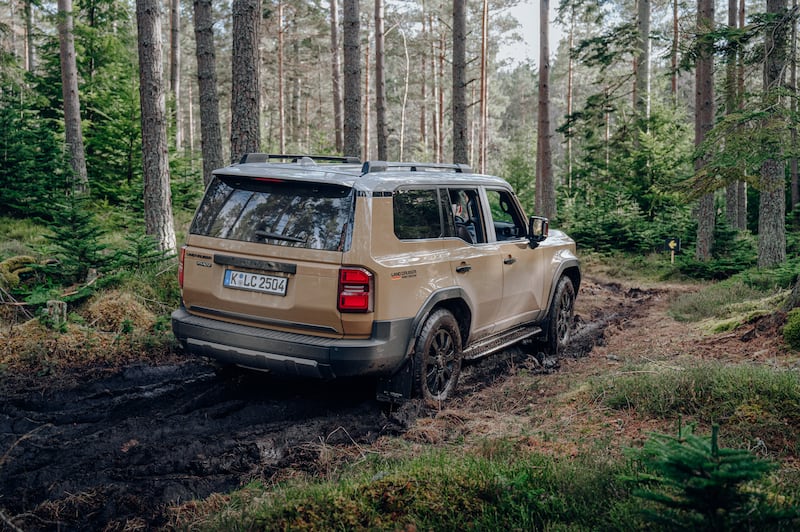
The new generation Land Cruiser will arrive in Ireland this autumn for 2025 sales either as a seven-seat passenger version or a commercial vehicle.
Both will initially be powered by a 2.8-litre 204hp diesel putting out 500Nm of torque and matched with a new eight-speed automatic transmission.
A mild-hybrid version is on the way next year, and further forms of electric powertrain may be in the distant future, but for now Toyota believes that diesel is still the favoured choice for these working vehicles. And that’s what the Land Cruiser is in essence, distinctly different from the crossovers favoured by the suburban masses.
Yet just because it’s a proper workhorse, doesn’t mean its owner can’t enjoy some creature comforts.
Inside, you get most of the usual Toyota furnishings, but for the passenger version there’s more leather than you might expect, a lot more soft-touch material, and smart, responsive 12.3-inch digital displays. We’re assured that a lot of these features will carry across to the commercial version as well, though the screens will be smaller, and the driver dials are likely to be analogue.
For the passenger version, you will also get some added features like a panoramic roof.
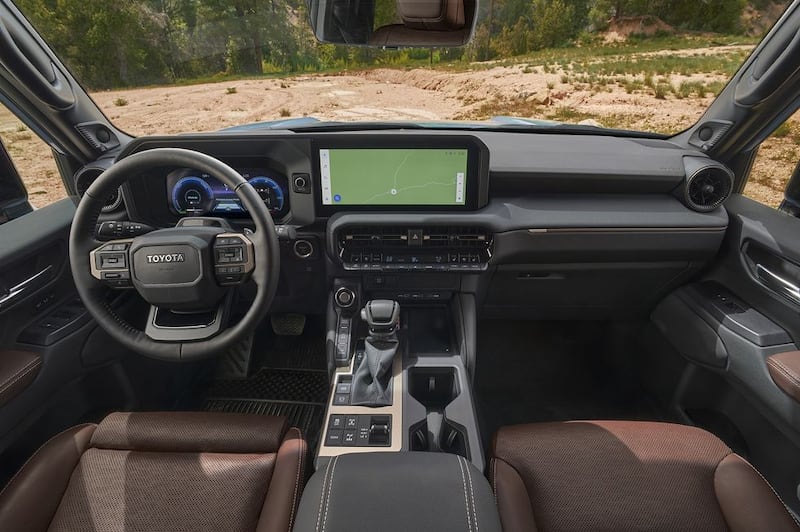
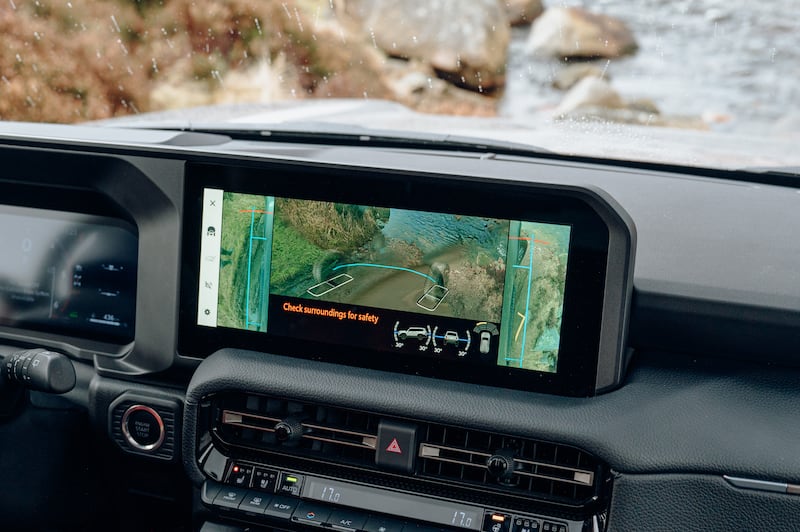
It all adds up to a comfortable family-friendly SUV that rides smoothly on the roads and doesn’t waddle through the corners. It’s got decent performance from that diesel engine, and a credible new electric steering system that is point-and-click on the roughest surfaces but informative on regular surfaces. During our time with this latest Land Cruiser, we also got a brief drive in the 1979 version. A wonderfully preserved classic, that was still as rugged on rocky roads as it was when new, but the lack of power steering and the high clutch bite was a timely reminder of how easy modern off-road drivers have it these days. Back then, the Land Cruiser was unlikely to break down tackling the muddy ruts, but the driver might.
The on-road driving ability of the new Land Cruiser is not as dynamic as the similarly sized road-orientated crossovers, but none of those can come close to the Toyota when the going gets rough.
The Land Cruiser has proper off-road credentials, including low-ratio gearing and differential locks.
The biggest challenge for proper off-roaders – not the soft-roaders that top the new car sales tables every month – is mixing real off-road capability with on-road driving ability.
For off-roading you need what’s called wheel articulation – basically how far the axle can move up and down relative to the chassis. Loads of movement range is ideal for off-roading, but when on-road it leaves the car rolling about in the bends.
Understandably, car engineers tend to sacrifice off-road ability here for on-road stability.
Toyota has come up with a new system called the Stabiliser Disconnect Mechanism, which allows for up to 10 per cent more articulation when off-road. It’s a mechanical device – delivering a reassuring metallic clunk from the car’s underbelly when engaged via an electronic button – that disconnects the front stabiliser and that means improved off-road performance. In turn, by hitting the button to reconnect, it delivers a more comfortable ride on standard roads.
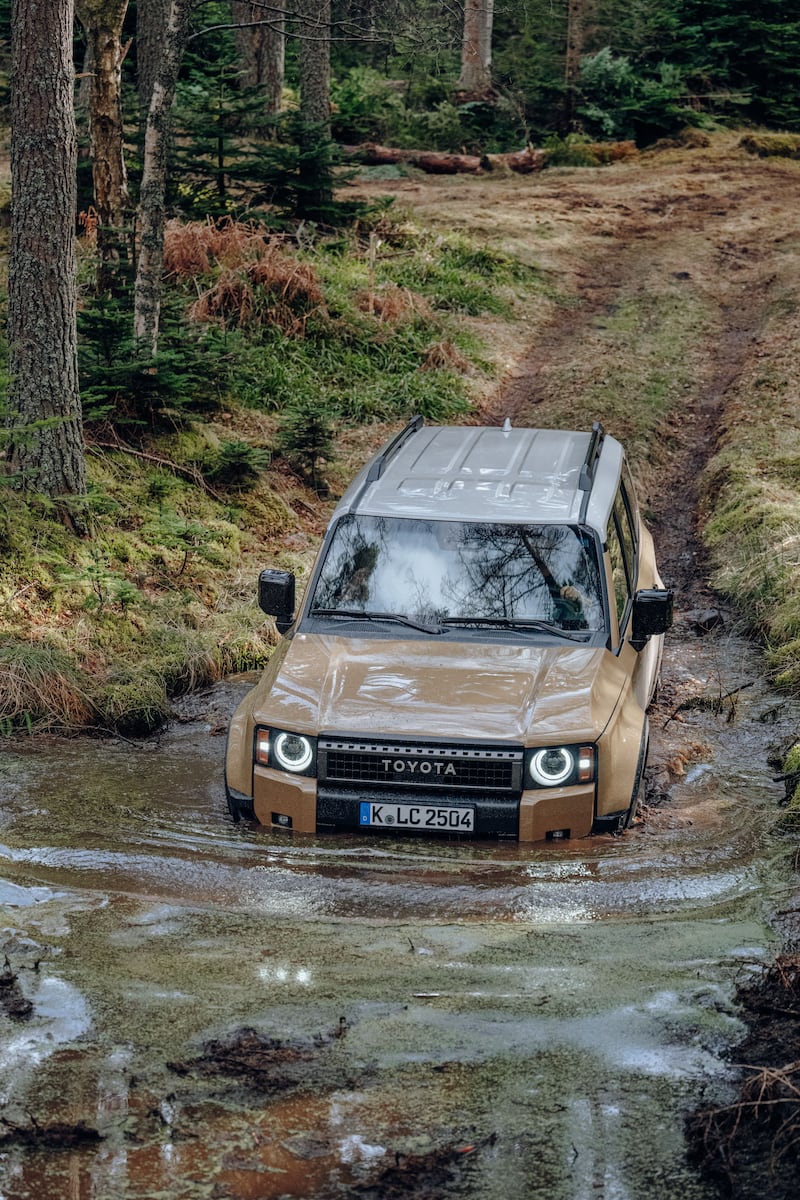
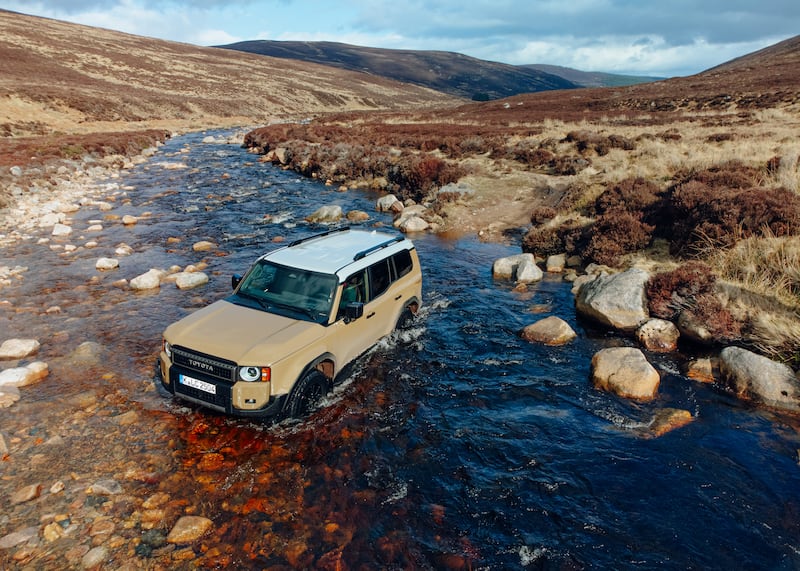
It certainly pays off when you leave the tarmac. During our day in the new car, about 20 per cent was spent on the road, but the rest was either on boulder-strewn mountain paths or deep mud-rutted forest trails that would challenge your average tractor, never mind a high-end SUV.
Its rugged mechanics are matched with some whizz-bang technology as well. For starters, there is a camera view that shows you precisely what the wheels are traversing under the bonnet – a godsend when your front nose is pointing to the sky during a hill climb. Then there are the myriad of driving modes, that ultimately let you leave throttle and braking to the car while you just look after the steering.
It’s most impressive in crawl mode, where this behemoth seems to pause, think about the best approach, and then steadily tackles the most ridiculous off-road challenges, one wheel at a time.
We don’t have prices for the new Land Cruiser, but we don’t expect the passenger version to land here for under €100,000. So, while we were happy to wade it through a waist-high stagnant pool of stinking forest water, if it was our car, it wouldn’t have left the tarmac.
That is the quandary with these vehicles. They are capable of some amazing off-road feats, but would you really do it in your own car? I guess the real comfort comes in knowing that it can, and hoping you never need to in real life. But if you are not going to use the technology, then why spend a six-figure sum on excess engineering?
There are, of course, well-heeled farmers who will see this for what it is; a remarkably comfortable utility vehicle that will let you access any part of your land, while also looking smart in the car park of any fancy hotel.
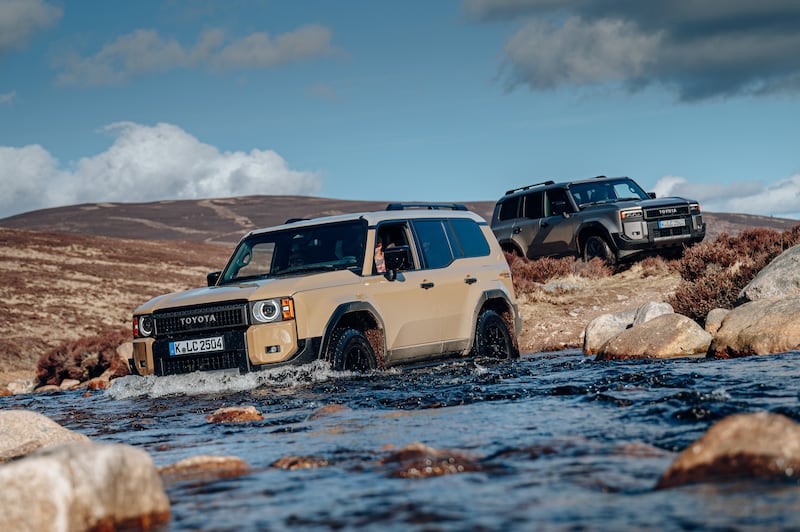
It’s the impressive range of possibilities it offers, along with the relative subtlety of the Toyota brand and the reputation for reliability that has long put it top of many farming and construction shopping lists.
Does it have a future without electric? Given the remote regions where the Land Cruiser roams, it’s likely that combustion power will feature in its line-up for several years to come. Yet there are indications – in concept form – that Toyota is considering electrification for some variants, and as the western market-orientated all-rounder, the 250 variant would probably be the best fit.
Toyota’s chief engineer defines the Land Cruiser as “a vehicle that can go anywhere and comes back alive”. If the car can do that, then so can its occupants.
The best thing about this vehicle is that, if you need an off-roader, no one ever asks you why you opted for a Land Cruiser. They just nod at your wise choice. That’s even more the case with the new one.




















